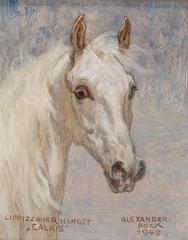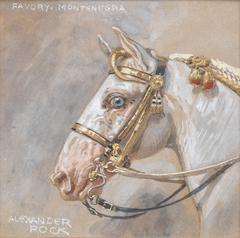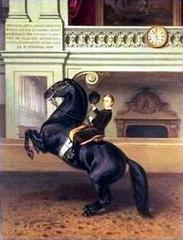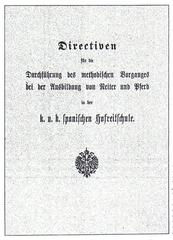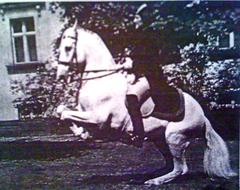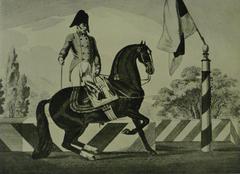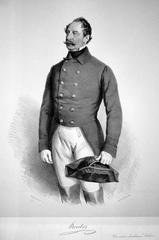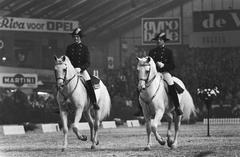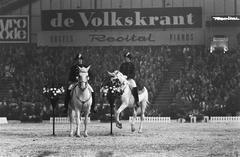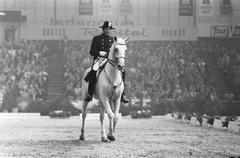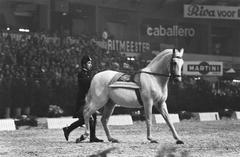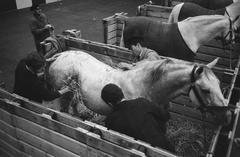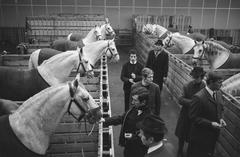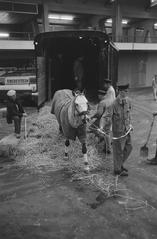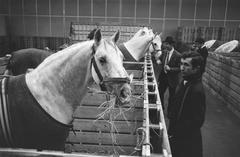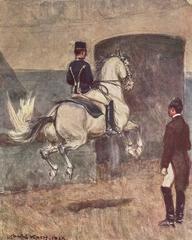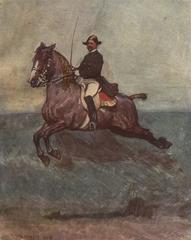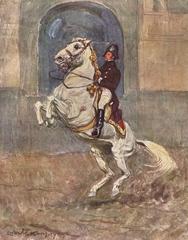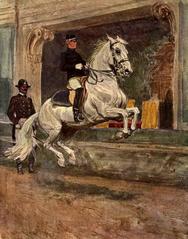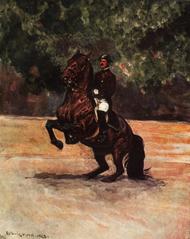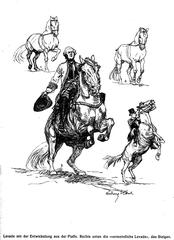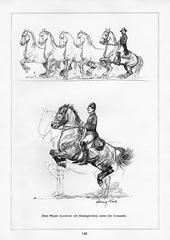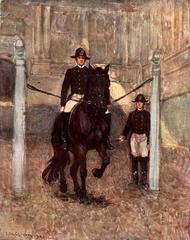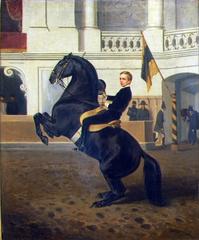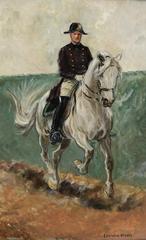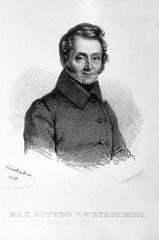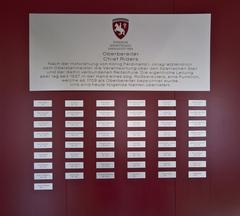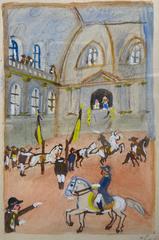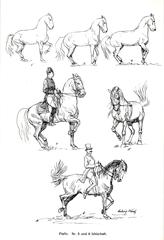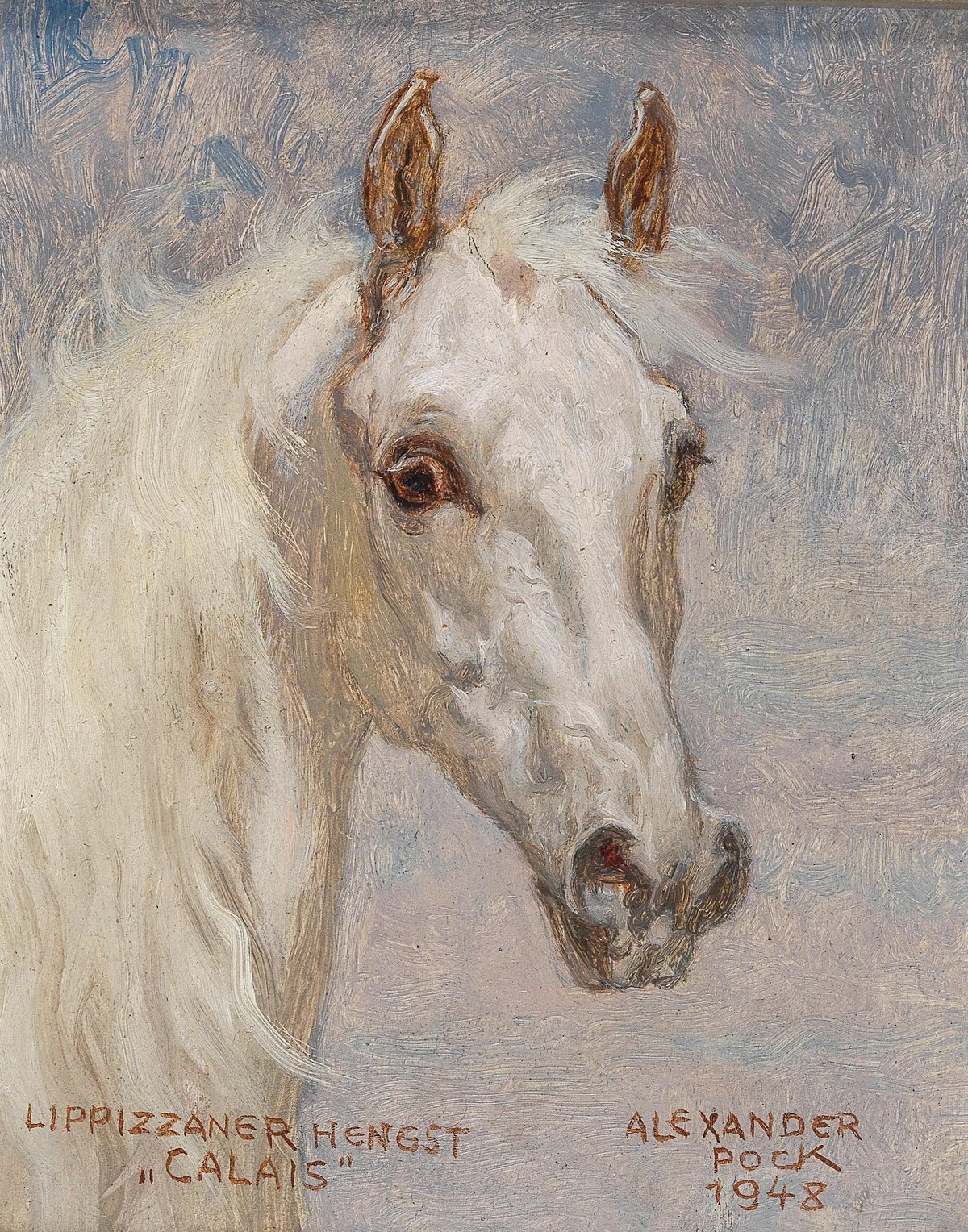
Spanish Riding School Vienna: Visiting Hours, Tickets, and Historical Site Guide
Date: 14/06/2025
Introduction: History and Cultural Significance
The Spanish Riding School in Vienna (Spanische Hofreitschule) is a living monument to over 450 years of classical equestrian tradition, making it a premier destination for those passionate about history, culture, and the art of dressage. Established in the late 16th century during the Habsburg Monarchy, it holds the distinction of being the oldest classical riding academy worldwide, famous for its preservation of haute école—the highest form of classical dressage—performed by the legendary Lipizzaner stallions. These horses, whose ancestry blends Spanish, Arabian, and Berber breeds, symbolize centuries of European equestrian heritage (vienna-trips.at; Wikipedia; UNESCO).
Set within the breathtaking Baroque Winter Riding School in Vienna’s historic Hofburg Palace, the Spanish Riding School offers visitors more than performances—it is an immersive cultural experience. Guests can admire the architectural splendor, witness rigorous training, and explore centuries-old traditions. Whether you attend a performance, join a guided tour, or observe morning exercises, you’ll gain unique insight into this revered institution’s legacy and its ongoing commitment to equestrian excellence (wien.info; SRS Official).
This guide provides all the essential information—history, visiting hours, ticket types, venue navigation, nearby attractions, and practical tips—ensuring a memorable and well-informed visit to one of Vienna’s most treasured historical sites (Vienna Concerts; Eternal Arrival).
Table of Contents
- Introduction: History and Cultural Significance
- Origins and Early Development
- Architectural and Institutional Evolution
- The Lipizzaner Stallions: Breeding and Heritage
- Preservation of Classical Horsemanship
- Historical Milestones and Wartime Challenges
- Cultural Significance and UNESCO Recognition
- Visitor Information: Tickets, Visiting Hours & Tours
- How to Get There
- Nearby Attractions
- FAQs
- Visual and Interactive Resources
- Conclusion
- References
Origins and Early Development
The Spanish Riding School’s origins date to the late 16th century, rooted in the Habsburg monarchy’s enthusiasm for horsemanship and Spanish horses, valued for their agility and grace (vienna-trips.at; Britannica). Ferdinand I, later Holy Roman Emperor, imported Iberian horses to Austria, and crossbreeding with Arabian and Berber stock led to the development of the Lipizzaner breed—the school’s enduring equine stars. The name “Spanish Riding School” pays tribute to these Spanish origins.
Architectural and Institutional Evolution
The Spanish Riding School resides in the grand Winter Riding Hall, a Baroque masterpiece built between 1729 and 1735 by architect Joseph Emanuel Fischer von Erlach (wien.info). Adjacent stands the Renaissance Stallburg, where the Lipizzaner stallions have been stabled for over 450 years (srs.at). The school also includes a Summer Riding School and houses one of the world’s largest oval horse walkers, supporting the comprehensive training of its horses.
The Lipizzaner Stallions: Breeding and Heritage
At the core of the school’s tradition are the Lipizzaner stallions, known for their intelligence, strength, and grace (vienna-trips.at; jennifereremeeva.com). These horses are born dark and gradually turn white by age 6–10, adding to their mystique. The Lipizzan Stud Piber in Styria breeds and trains these horses before they arrive in Vienna, preserving a cultural and genetic legacy (srs.at).
Preservation of Classical Horsemanship
The Spanish Riding School is the sole institution continuously practicing haute école since the Renaissance (wien.info; Britannica). Riders, or Bereiter, undergo apprenticeships of up to 12 years, mastering advanced dressage movements such as the levade, courbette, and capriole—maneuvers that originated as cavalry skills and are now displayed as equestrian ballet (srs.at).
Historical Milestones and Wartime Challenges
The School witnessed major historical events, such as hosting the 1848 Viennese citizen-Reichstag negotiations (jennifereremeeva.com). During World War II, a daring rescue saved the Lipizzaner horses, ensuring the breed’s survival and the school’s traditions (jennifereremeeva.com).
Cultural Significance and UNESCO Recognition
In 2015, UNESCO recognized the Spanish Riding School as part of the Intangible Cultural Heritage of Humanity (UNESCO). The school’s commitment to tradition, breeding excellence, and the horse-rider relationship is celebrated globally. It also collaborates with veterinary universities to promote equine research and welfare (jennifereremeeva.com).
Visitor Information: Tickets, Visiting Hours & Tours
Visiting Hours
- Performances: Generally held Tuesday through Sunday, with afternoon and occasional evening shows. Schedules may vary by season and event.
- Morning Exercises: Tuesday to Friday at 10:00 AM, showcasing the horses’ daily training.
- Guided Tours: Available throughout the day; check the official website for current times.
Tickets
- Performance Tickets: Range from €40–€70 depending on seat and event type (ViennaConcerts.com).
- Morning Exercise: Standing tickets from €15–€20; Vienna Pass holders may have free standing access (Eternal Arrival).
- Guided Tours: About €19 per person; special architectural tours may cost more (NationalTraveller.com).
- Booking: Advance purchase is strongly advised, particularly for performances and high season. Buy tickets via the official site or reputable vendors.
Guided Tours
Tours cover the Winter Riding School, stables, and tack rooms. Specialized tours focus on the school’s architecture, history, or are tailored for families (Visiting Vienna).
Accessibility
The main areas, including the Winter Riding School and stables, are wheelchair accessible. Some specialty tours (e.g., architectural roof tour) may involve stairs.
Tips
- Arrive Early: For security screening and best seating.
- Dress Code: Smart-casual recommended.
- Photography: Not allowed during performances; permitted in certain areas during tours (The Better Vacation).
- Children: Under 3 not admitted to performances; special children’s tours available (Visiting Vienna).
How to Get There
- Address: Michaelerplatz 1, 1010 Wien (Vienna)
- Metro: U3 to Herrengasse, U1/U3 to Stephansplatz
- Tram: Lines 1, 2, D to Michaelerplatz
- Bus: Lines 1A, 2A Parking is limited; public transport is recommended (NationalTraveller.com).
Nearby Attractions
- Hofburg Palace Complex: Museums, Imperial Apartments, Austrian National Library
- St. Stephen’s Cathedral: Iconic Gothic landmark nearby
- Albertina Museum: World-class art collections
- Vienna State Opera: Renowned opera house
Frequently Asked Questions (FAQs)
Q: What are the Spanish Riding School visiting hours?
A: Performances are typically Tuesday–Sunday, with morning exercises Tuesday–Friday at 10:00 AM. Guided tours run daily; confirm on the official calendar.
Q: How do I buy tickets?
A: Tickets are available via the official website and trusted vendors such as Vienna Ticket Office.
Q: Is the Spanish Riding School wheelchair accessible?
A: Yes, main areas are accessible. Notify the venue ahead for assistance.
Q: Are guided tours offered?
A: Yes, in multiple languages. Check for availability and booking details.
Q: Can I take photos or videos during performances?
A: No, photography and videography are prohibited during performances to protect the horses and maintain the atmosphere.
Q: Are there discounts for families or children?
A: Children under 3 are not admitted to performances; those 3–6 may attend free on a parent’s lap. Family tours available.
Visual and Interactive Resources
- Virtual Tours & Videos: Available on the Spanish Riding School’s official website and social media.
- Image Suggestions:
- Lipizzaner stallions performing haute école (alt: “Lipizzaner stallions performing classical dressage at the Spanish Riding School, Vienna.“)
- Winter Riding School arena interior (alt: “Baroque Winter Riding School arena, home of the Spanish Riding School in Vienna.“)
- Hofburg Palace exterior (alt: “Hofburg Palace, historic location of the Spanish Riding School, Vienna.“)
- Optimize images with descriptive file names and SEO-friendly alt text.
Conclusion
A visit to the Spanish Riding School in Vienna is a captivating journey into Austria’s living traditions of equestrian excellence and baroque grandeur. Whether you’re drawn by the artistry of the Lipizzaner stallions, the architectural wonders of the Winter Riding School, or the deep-rooted history of the Habsburgs, your experience will be both educational and inspiring. Plan ahead, secure your tickets early, and explore the surrounding imperial city to make your trip truly unforgettable.
For ongoing updates, travel tips, and more on Vienna’s historical sites, follow the Spanish Riding School’s official channels and explore related guides.
References
- Spanish Riding School in Vienna: History, Visiting Hours, Tickets & Visitor Guide, 2025, Vienna-Trips.at (vienna-trips.at)
- Spanish Riding School of Vienna, 2025, Britannica (Britannica)
- Spanish Riding School, 2025, Wien.info (wien.info)
- Tickets and Guided Tours, 2025, Spanish Riding School Official (srs.at)
- The Spanish Riding School in Vienna: Visiting Hours, Tickets, and Cultural Highlights, 2025, Vienna Concerts (Vienna Concerts)
- Visitor Experience at the Spanish Riding School, 2025, Eternal Arrival (Eternal Arrival)
- Spanish Riding School Tickets, Visiting Hours, and Insider Tips, 2025, National Traveller (NationalTraveller.com)
- Spanish Riding School, 2025, UNESCO Intangible Cultural Heritage (UNESCO)
- Spanish Riding School, 2025, Wikipedia (Wikipedia)
- Jennifer Eremeeva, The Spanish Riding School Vienna, 2025 (jennifereremeeva.com)
- Visiting Vienna: Spanish Riding School, 2025 (Visiting Vienna)
- Vienna Tourist Information: Spanish Riding School, 2025 (Vienna Tourist Information)
